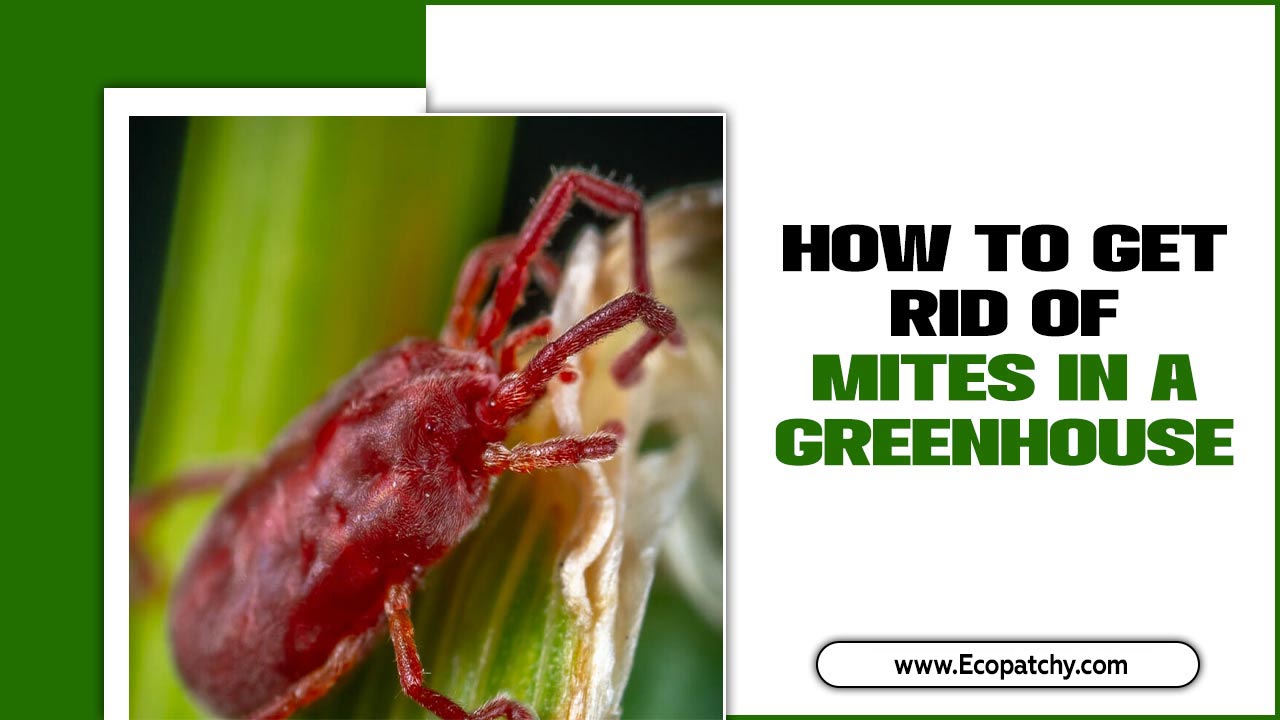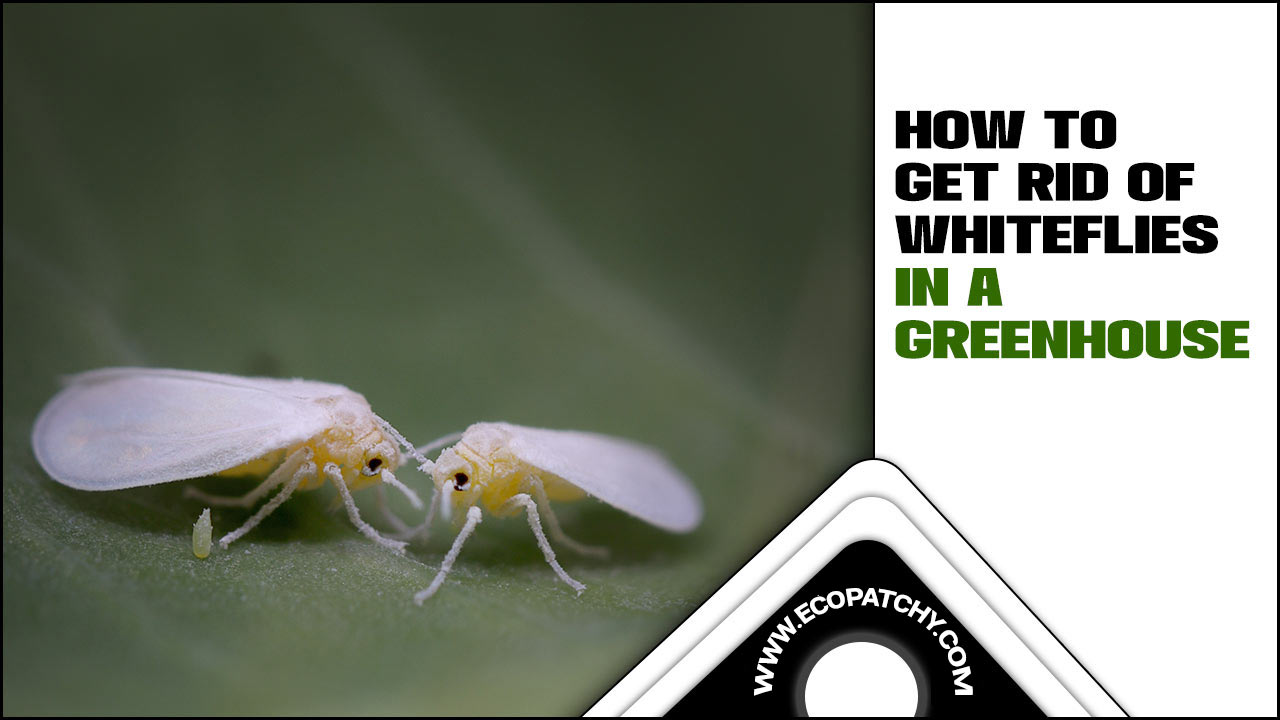Greenhouses are a valuable asset for gardeners and farmers, providing a controlled environment for plants to thrive. However, with the ideal conditions for growth also comes the risk of plant diseases.
One common issue that can plague greenhouse plants is powdery mildew. This fungal infection spreads quickly and can cause significant damage to your crops if left untreated. As a result, greenhouse owners need to know how to identify and effectively eliminate powdery mildew.
Here, we will discuss what powdery mildew is, its symptoms, how to get rid of powdery mildew in your greenhouse with our expert tips. We will cover everything from proper ventilation and air circulation to utilizing organic fungicides and biological controls. We will also share additional strategies and techniques for powdery mildew control, troubleshooting common mistakes to avoid, and recommended products to combat powdery mildew.
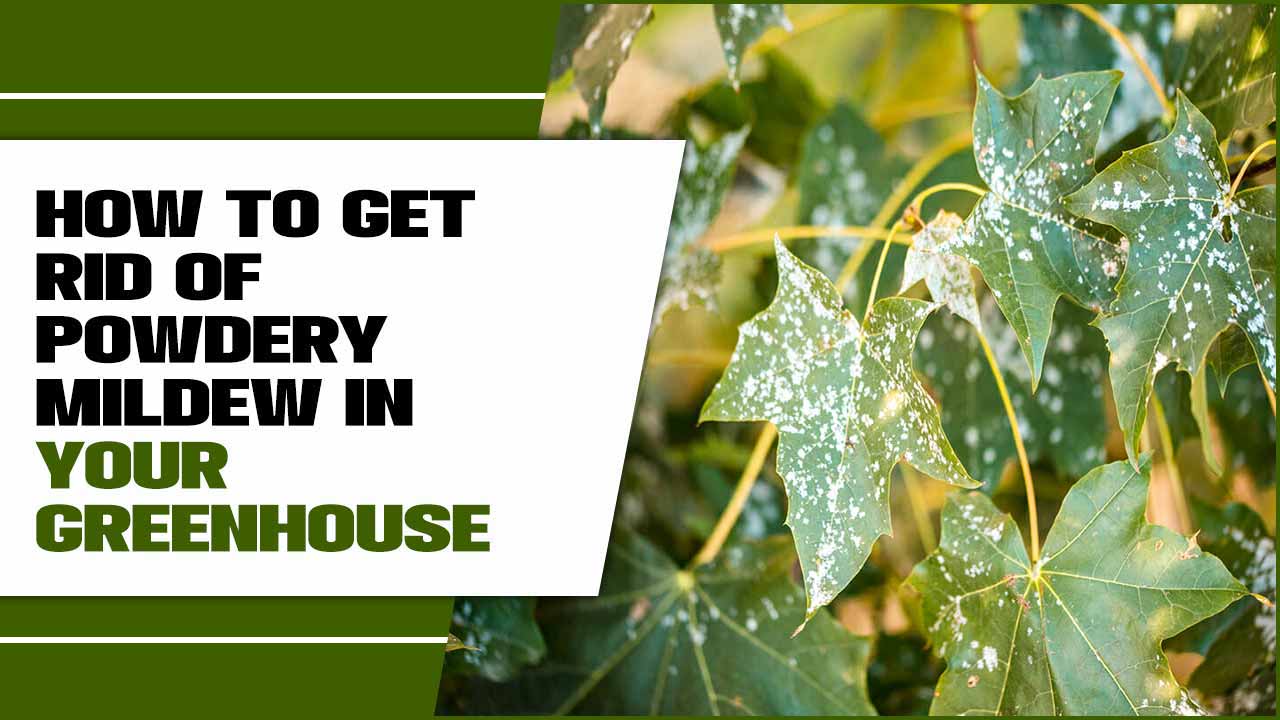
What Is Powdery Mildew?
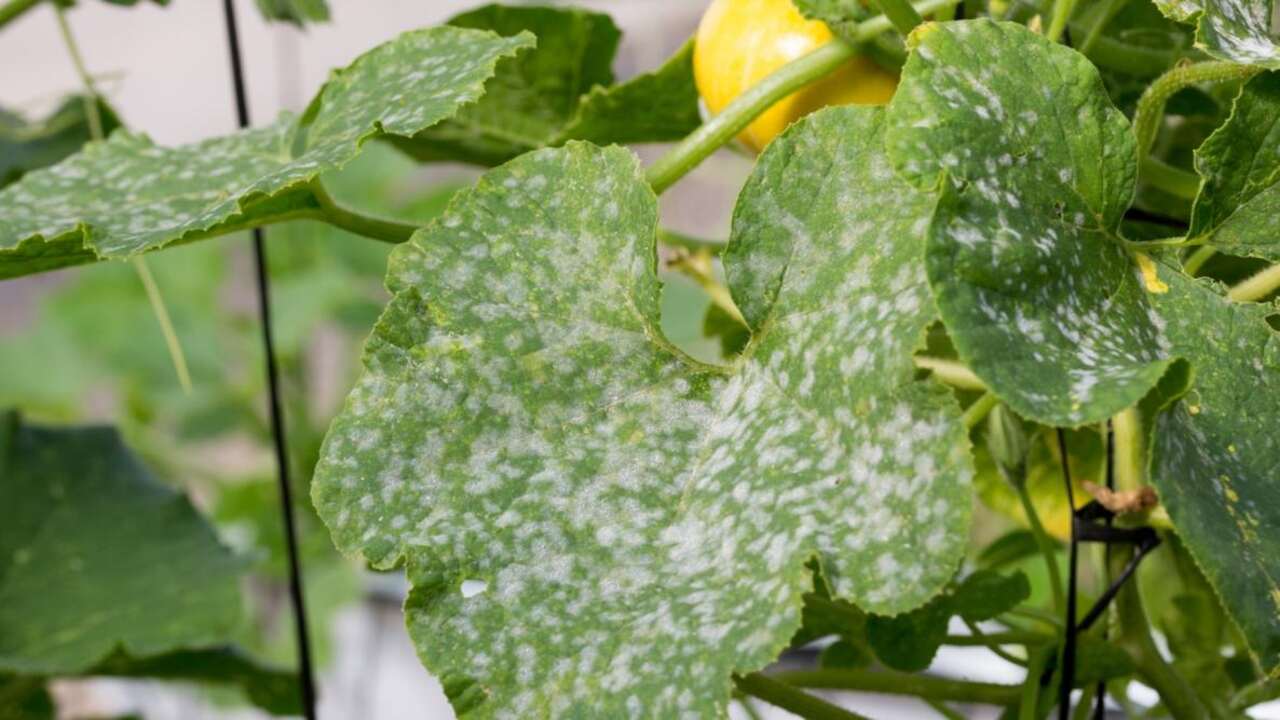
Powdery mildew is a fungal infection that affects plant foliage, causing white spots and powdery growth. It spreads through spores, thriving in humid and dry conditions. To prevent it, consider resistant varieties, organic remedies, and proper maintenance techniques.
Symptoms Of Powdery Mildew Infection
Symptoms of powdery mildew infection manifest as white spots on the foliage of your plants, indicating the presence of this fungal disease. It is crucial to recognize powdery mildew as a fungal infection that affects the cells of your plants.
Another symptom to be aware of is the growth of white mold, which can be seen alongside the powdery growth. Take note of the powdery mildew spores that develop on plant debris, which are responsible for spreading the infection. It is important to be vigilant, as powdery mildew outbreaks often occur at the beginning of the growing season.
How To Get Rid Of Powdery Mildew In Your Greenhouse: 8 Expert Tips

If you’re dealing with powdery mildew in your greenhouse, don’t worry – there are steps you can take to get rid of it. Powdery mildew is a common problem in greenhouses, but there are several effective ways to manage and prevent its spread.
This fungal disease thrives in warm, humid conditions and can quickly damage plants if left untreated. By following these expert tips, you can effectively combat powdery mildew in your greenhouse and ensure the health and vitality of your plants. Here are eight expert tips on how to get rid of powdery mildew in your greenhouse:
1: Proper Ventilation And Air Circulation

To effectively combat powdery mildew in your greenhouse, proper ventilation and air circulation play a crucial role. Increasing airflow within your greenhouse is key to preventing the growth of this plant disease. Installing fans or ventilation systems can greatly improve air circulation, ensuring that stagnant air does not promote powdery mildew.
Regularly opening greenhouse vents allows fresh air to enter and helps maintain a healthy environment for your plants. During mild and dry weather conditions, keeping greenhouse doors and windows open can further enhance air circulation. Strategically placing your greenhouse plants also maximizes airflow, reducing the risk of powdery mildew outbreaks. By implementing these measures, you create an environment that discourages the development and spread of this plant fungus.
2: Maintain Optimal Humidity Levels

To prevent the growth of powdery mildew in your greenhouse, it’s essential to maintain optimal humidity levels. Keep a close eye on the humidity and aim for a range between 40% and 60%. Lowering the humidity can be achieved by using dehumidifiers or air conditioners.
It’s important to avoid overwatering your plants, as excessive moisture increases humidity levels. Allow the foliage of your plants to dry completely, as this reduces the humidity that favours powdery mildew growth. To accurately measure the humidity in your greenhouse, consider using moisture meters or humidity sensors.
By maintaining optimal humidity levels, you can effectively control the spread of powdery mildew and protect your plants from this damaging plant disease.
3: Regularly Inspect And Quarantine New Plants
Before introducing new plants to your greenhouse, it is crucial to inspect them for any signs of powdery mildew infection. Look out for white spots and powdery growth on the leaves, as these are common symptoms. To prevent the spread of the disease, isolate new plants in a separate area of the greenhouse for observation.
Monitor them closely for any development of powdery mildew symptoms. If you notice an infection, take immediate action by treating the plants with recommended control methods. Only move the new plants into the greenhouse once the powdery mildew infection has been eliminated. This proactive approach will help protect your existing plants from the risk of this fungal disease.
4: Monitor And Control Temperature
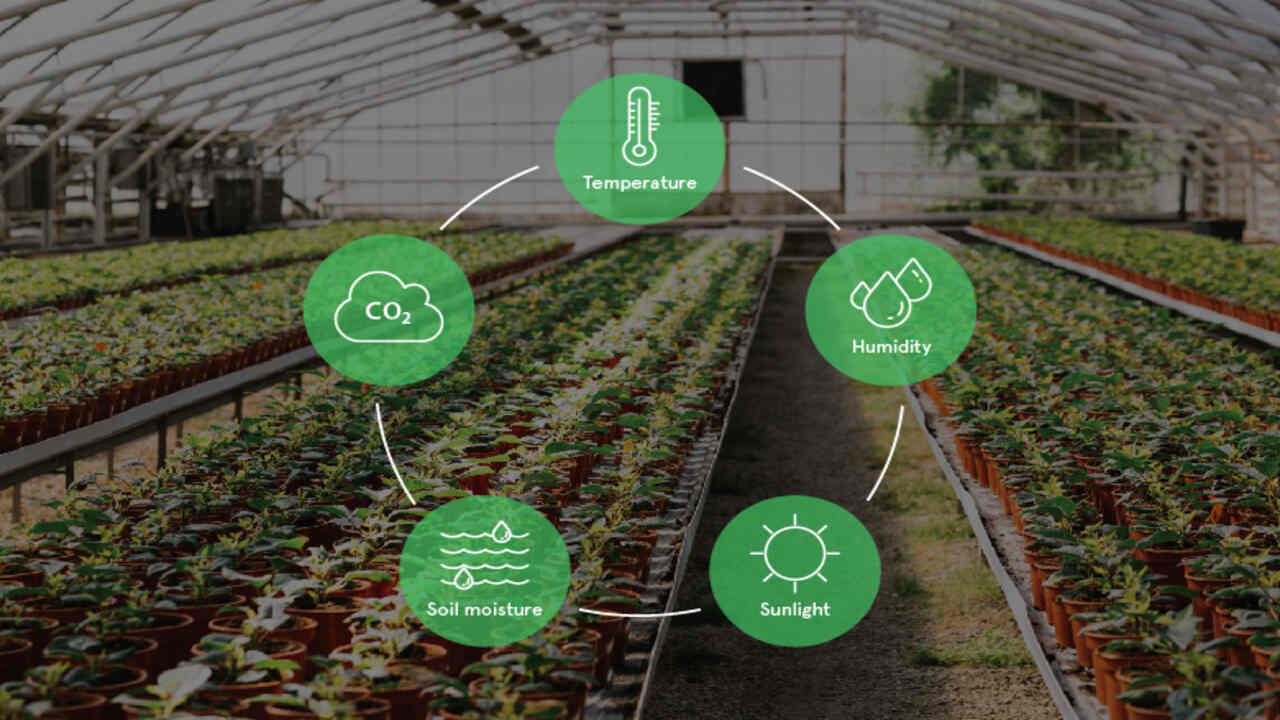
Maintaining the greenhouse temperature within the optimal range is crucial for preventing powdery mildew and ensuring healthy plant growth. It is recommended to keep the temperature between 65°F and 80°F, which provides the ideal conditions for plants to thrive.
Extreme temperature fluctuations can weaken plant defences against powdery mildew, so it’s important to avoid such fluctuations. To regulate the temperature, you can use heaters, ventilation systems, and shade cloth. Installing thermostats or temperature sensors allows you to monitor the temperature levels accurately.
Based on the specific requirements of your plants and the prevailing weather conditions, make necessary adjustments to temperature settings, ventilation, and shading. By maintaining a stable and suitable temperature environment, you can effectively prevent powdery mildew and promote healthy plant growth.
5: Remove Infected Leaves And Plant Debris
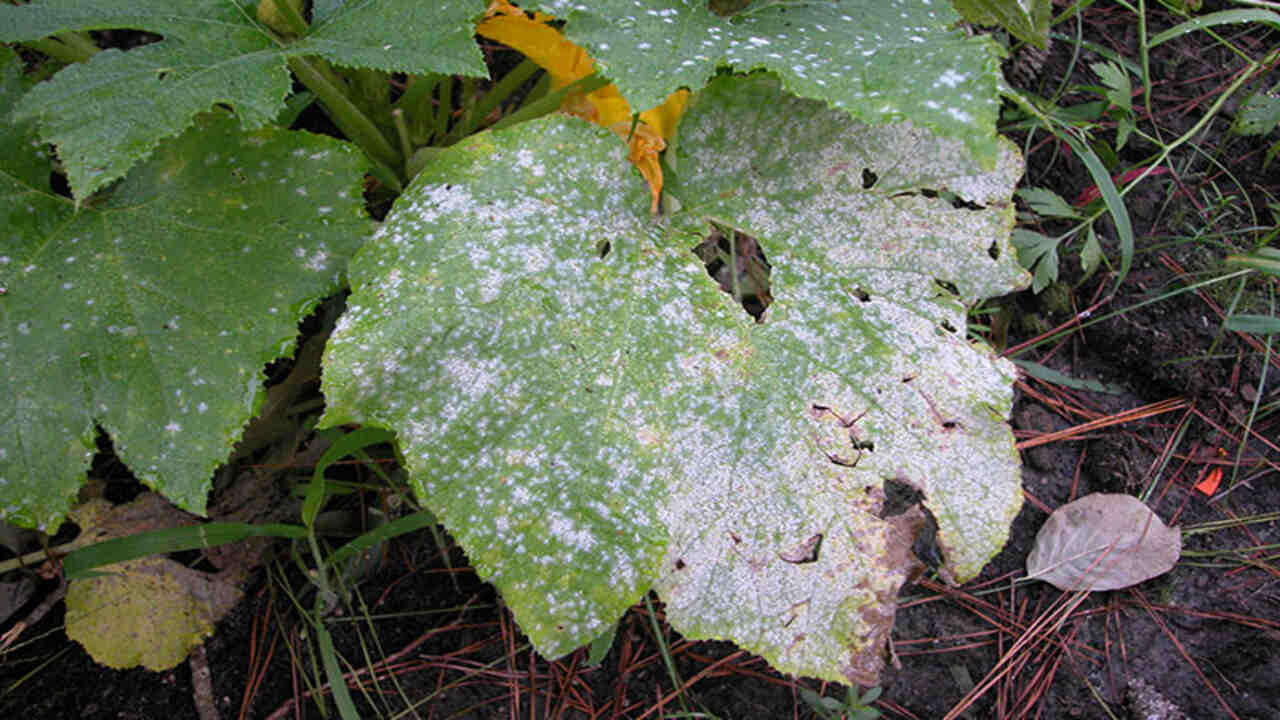
Regularly inspect your plants for any signs of powdery mildew infection, specifically focusing on the foliage. Once you identify infected leaves, you must act swiftly by pruning and removing them. This step is crucial as infected leaves can actively spread the powdery mildew spores.
Additionally, it’s important to clear out any plant debris, fallen leaves, or organic matter from the greenhouse floors. Properly disposing of infected plant debris away from the greenhouse area is equally important to prevent any possible recurrence of powdery mildew. By maintaining cleanliness and implementing sanitation practices, you can effectively eliminate powdery mildew and ensure a healthy growing environment for your plants.
6: Utilize Organic Fungicides And Biological Controls
When combating powdery mildew in your greenhouse, utilizing organic fungicides and biological controls can be an effective strategy. Explore options such as sulfur, sodium bicarbonate, potassium bicarbonate, neem oil, and baking soda as organic fungicide alternatives.
Be sure to follow the recommended application rates and schedules for these fungicides. Additionally, consider introducing beneficial insects like ladybugs, lacewings, and predatory mites into your greenhouse to help control powdery mildew.
Implementing preventative measures such as proper plant spacing, using resistant cultivars, and practising organic gardening techniques can also help minimize the incidence of powdery mildew. Finally, don’t hesitate to experiment with organic remedies like compost tea, milk solution, or horticultural oil to combat this plant disease.
7: Implement Proper Watering Practices

To prevent the growth and spread of powdery mildew in your greenhouse, it’s essential to implement proper watering practices. Powdery mildew thrives in humid and damp conditions, so adequate ventilation is crucial. Regularly inspect your plants for any signs of powdery mildew and act quickly if you detect any.
Removing infected plant materials and debris from the greenhouse will help prevent the disease from spreading. When watering your plants, avoid overhead watering and instead water at the base of the plants to prevent excess moisture.
Additionally, rotating crops and avoiding overcrowding can reduce the risk of powdery mildew. By following these watering practices, you can effectively control powdery mildew and maintain healthy plants in your greenhouse.
8: Regularly Clean And Disinfect Greenhouse Surfaces
Regular cleaning and disinfection of greenhouse surfaces is crucial in preventing the spread of powdery mildew. This plant disease thrives in warm and humid environments, making greenhouses a prime target. One of the best ways to manage powdery mildew is to use a fungicide treatment on infected plants.
In addition, improving ventilation and reducing humidity levels in the greenhouse can help create an environment less conducive to the growth of powdery mildew. Another eco-friendly approach is to consider using biological controls, such as predatory insects, to manage this plant fungus. Lastly, choosing resistant plant varieties less susceptible to powdery mildew can be a proactive measure to prevent its occurrence.
Additional Strategies And Techniques For Powdery Mildew Control
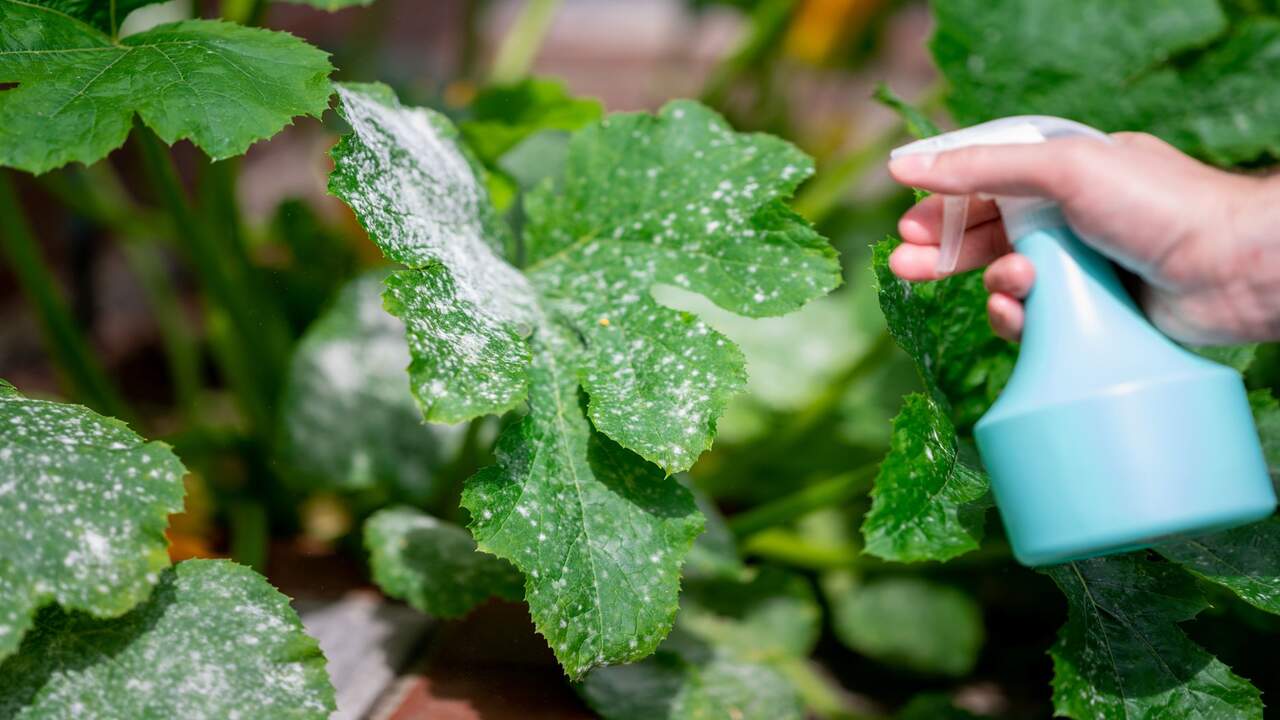
In addition to the basic strategies mentioned earlier, several additional techniques and strategies can help you effectively control powdery mildew in your greenhouse. By implementing these additional strategies and techniques, you can enhance your powdery mildew control efforts and maintain a healthy greenhouse environment for your plants. These include:
- Proper Ventilation: Powdery mildew thrives in humid conditions, so ensuring good air circulation in your greenhouse is essential. Use fans or vents to keep the air moving and reduce humidity levels.
- Regular Cleaning: Regularly clean your greenhouse, including all surfaces and equipment, to remove any fungal spores that may be present. This can help prevent the spread of powdery mildew.
- Pruning And Thinning: Remove any infected plant parts promptly to prevent the spread of powdery mildew. Additionally, thinning out crowded plants can improve air circulation and reduce humidity levels, making it less favourable for powdery mildew growth.
- Avoid Overhead Watering: Watering from above can create a moist environment that is ideal for powdery mildew growth. Instead, water at the base of the plants or use drip irrigation to minimize moisture on foliage.
- Biological Controls: Consider using biological controls such as beneficial insects or fungi that feed on powdery mildew. These natural predators can help keep the fungal population in check.
Troubleshooting And Common Mistakes To Avoid
To effectively combat powdery mildew in your greenhouse, it’s important to be aware of common mistakes and troubleshooting tips. One common mistake to avoid is watering plants late in the day, as moisture on foliage can encourage powdery mildew growth.
Additionally, overcrowding plants restrict airflow and increase humidity levels, creating an ideal environment for powdery mildew. Monitor new growth for early signs of infection and promptly remove any infected plant parts to prevent spores from spreading.
Finally, consider using commercial products specifically designed to combat powdery mildew. By avoiding these common mistakes and following these troubleshooting tips, you can effectively manage and prevent powdery mildew in your greenhouse.
Are There Any Recommended Products To Combat Powdery Mildew?
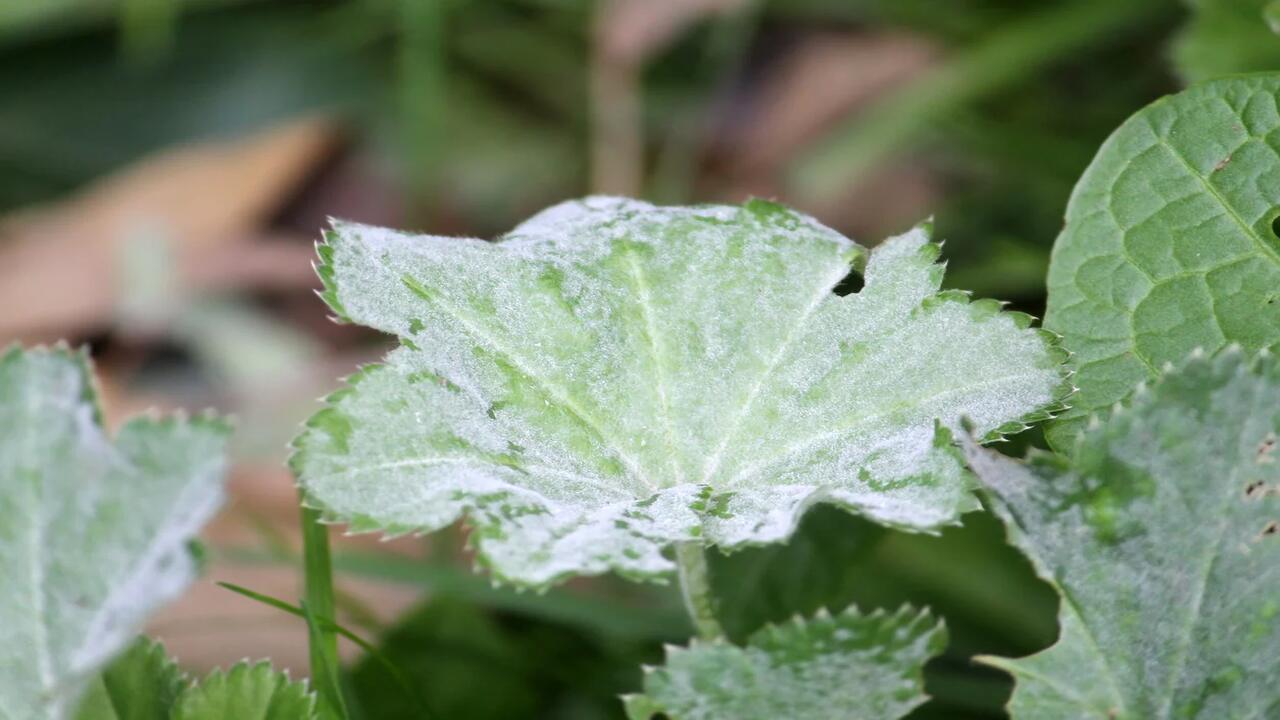
When it comes to combating powdery mildew in your greenhouse, several recommended products can help. One commonly used treatment is sulfur-based fungicides, which work by inhibiting the growth of the fungus that causes powdery mildew.
These fungicides can be applied as a spray or dust and should be used according to the manufacturer’s instructions. Another option is neem oil, derived from the neem tree and has natural antifungal properties. Neem oil can be mixed with water and sprayed onto affected plants to control powdery mildew.
Additionally, potassium bicarbonate is another effective treatment for powdery mildew. This substance disrupts the pH balance on the leaf surface, making it less favourable for fungal growth. It is important to note that prevention is key when it comes to powdery mildew, so regular monitoring and proper plant care practices should also be implemented to minimize the risk of an outbreak.
Conclusion
Preventing and managing powdery mildew in your greenhouse requires a combination of proactive measures and careful monitoring. By implementing proper ventilation, maintaining optimal humidity levels, regularly inspecting new plants, monitoring temperature, removing infected leaves, and utilizing organic fungicides and biological controls, you can effectively control and eradicate powdery mildew.
Additionally, practising proper watering techniques, regularly cleaning and disinfecting greenhouse surfaces, and avoiding common mistakes will further contribute to a healthy and powdery mildew-free environment.
While recommended products are available in the market, it is important to carefully review and select those that align with your specific needs and preferences. By considering these expert tips, you can maintain a thriving greenhouse and ensure the health and vitality of your plants. We’ve discussed how to get rid of powdery mildew in your greenhouse.
Frequently Asked Questions
1.What Kills Powdery Mildew?
Ans: To effectively kill powdery mildew, you can use fungicides like sulfur-based sprays or neem oil. Natural remedies such as milk or baking soda solutions are also helpful in controlling its spread. Preventive measures like proper ventilation and humidity maintenance can stop powdery mildew from spreading further.
2.What Is The Best Home Remedy For Powdery Mildew?
Ans: One effective home remedy for powdery mildew is a mixture of water and baking soda. Diluted milk can also be sprayed on affected plants. Additionally, neem oil or garlic oil with antifungal properties can help control powdery mildew.
3.What Should You Do If You Already Have Powdery Mildew?
Ans: If you find powdery mildew in your greenhouse, take immediate action. Remove infected plant material, improve air circulation, lower humidity levels, and apply a fungicide specifically for powdery mildew. Monitor for re-infection and continue preventative measures.
4.How To Prevent Mold In Greenhouses?
Ans: Proper ventilation is crucial in preventing mold growth in greenhouses. Maintain low humidity levels using dehumidifiers or fans. Regularly clean and sterilize equipment and surfaces to minimize mold spores. Avoid overcrowding plants and promptly remove any infected ones to prevent the spread of mold.
5.What Is Powdery Mildew, And How Does It Affect Greenhouse Plants?
Ans: Powdery mildew is a fungal disease that affects greenhouse plants, resulting in a white powdery coating on leaves and stems. It can harm the plant’s health, stunt growth, and reduce yield. Maintaining proper ventilation and humidity control in your greenhouse is crucial to prevent its spread.


